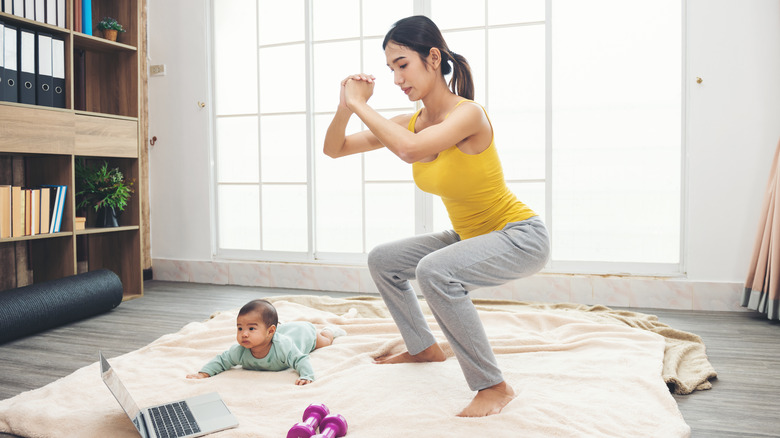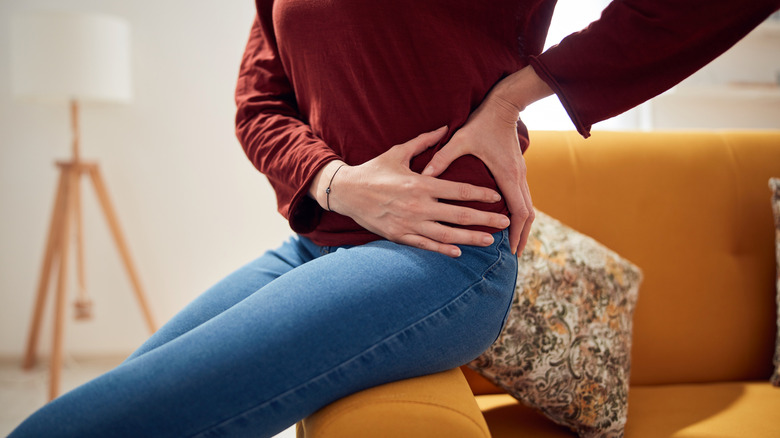Why Squats Are Hurting Your Hips
Most exercise routines involve squats. This exercise works your entire lower body and has many variations that can target specific muscles. However, some people experience pain in their hips when performing a squat. According to Healthline, there are many potential causes for this. Injuries in the hip area, such as a hip flexor strain, will contribute to pain felt when you use that part of the body while squatting.
Many health conditions can contribute to hip pain as well. For example, impingement is a health issue that is characterized by the bones in the hip joint not fitting well together. Any movement in the hips will often cause discomfort or pain. Osteoarthritis is another health condition that occurs when cartilage in the joints starts to wear away. If this develops in your hips, it will cause stiffness and pain when you squat. Bursitis, which is when the bursae in the hips become inflamed, can also cause pain when squatting. If you feel pain while performing squats, you should schedule a visit with your doctor to get to the root of the problem.
Other reasons you may feel hip pain while squatting
Underlying health conditions or injuries aren't the only reason you may be uncomfortable when squatting at the gym. According to Livestrong, mobility issues may be at play. Tight hip muscles and hip flexors can cause pain when performing a squat. This is because tight hip muscles prevent your glutes from being fully used during the exercise and cause your hips to overcompensate to keep your body stable. Poor ankle mobility and posture can also put extra strain on your hips when squatting and cause pain (via Healthline).
Hip pain may also be due to poor form. Squatting incorrectly can lead to pain in your hips, back, and knees. When performing this exercise, stand with your feet shoulder-width apart and hold your hands in front of your chest loosely to help you keep your balance (via Healthline). Keeping your chest high and your spine neutral, slowly lower your body until your thighs are parallel to the floor. Make sure that your knees do not bend outward or collapse inward. When your thighs are parallel to the floor, push yourself back to starting position.


